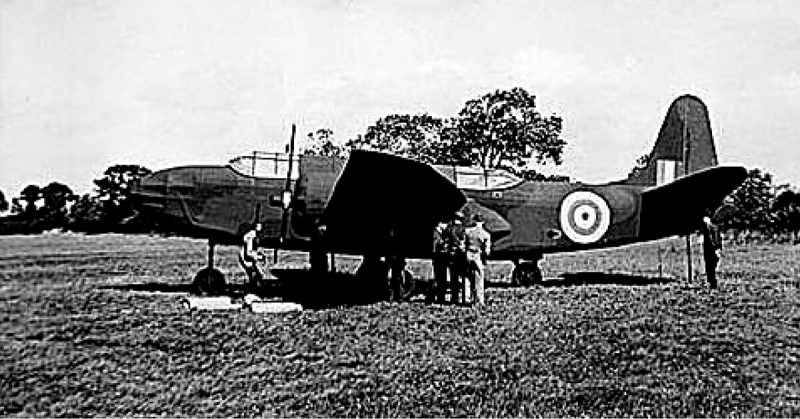The American 23rd Headquarters Special Troops were given a unique mission during World War II. The unit was made up of more than 1,100 men, who were on a mission to fool the enemy, fool the enemy in to believing they were other U.S. units. Nicknamed “Ghost Army,” the men operated near enemy and allied lines with elaborate tactics to trick the enemy.
Below are eight of the most audacious ways in which the Ghost Army deceived the Nazis.
Music
Music is utilized just about everywhere, including the battlefield. Okay, maybe not during an active battle, but at camp and HQ, some units may have a favorite song, etc. The Ghost Army looked to learn those songs, and then sing them. Several of them have said that they loved learning that a unit had a song, because they could then go in o town to the bars and restaurants and start singing them.
Generals
When trying to imitate someone, or something, realism is key. So what is a group of men to do about Generals? You have to imitate them of course. The Ghost Army often created fake headquarters for units, and to get the full look, they would wear stars on their chest to imitate the look of Generals. Though this is against the U.S. Army’s protocol, the men did it anyways.
The men have said before that they were often in fear when doing this, that they might get caught by another unit.
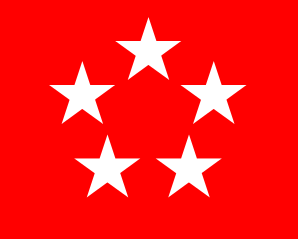
So Many Patches
Impersonation can be a tricky thing. You’ve got to act the part and look the part. When the Ghosts went out, they would try and dress just like the guys they were impersonating. This includes wearing the exact patches that the units would be wearing. But they oftentimes weren’t just impersonating one unit. They would go into towns and bars, rotating through them. At each place they were to have a different look. So how did they accomplish this? Through layers. They would take the smallest patch, and sew it on and then slowly work their way up to the biggest.
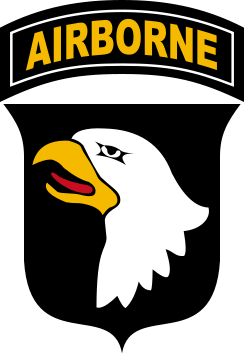
Layered patches. That’s how they did it. Several officers recollected having to sow on and rip off so many patches as they moved between locations, that it would tear their shirts completely through.
Morse Code

World War II fully utilized morse code, particularly when sending important, confidential messages. The Germans were able to really get right down to the specific style type of the morse coders, and because of this, the Ghost Army had to also mimic the code style.
Though many say copying the style of another (when typing morse code) is basically impossible, the Ghost Army was able to do it so well, that when the units networks went off for the day, no one would know. Their mimicking skills made it appear as though the show was still going on.
Special Effects
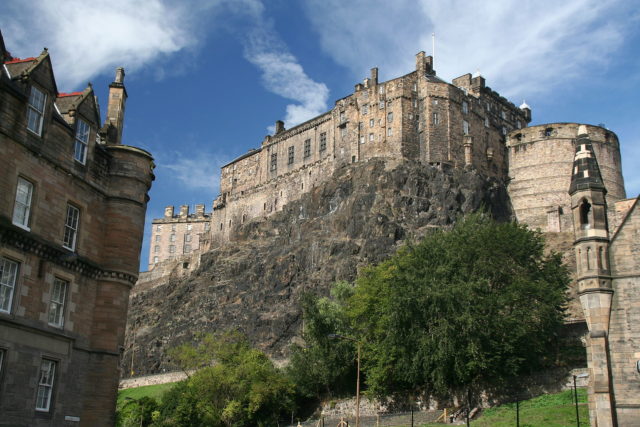
The Ghost Army had a truly unique job. If they were in a town, doing what they do, and there were known German spies there, they would try and carry out a show. The show was called “Special Effects.” The way it works? If they were imitating a unit who would be deployed to the town, they would paint that unit’s numbers on all of their trucks, tanks etc. and then drive them through town with a few men in/on them.
This gave the appearance that there was an entire unit in the town, from x division. But that’s not all, the trucks could be re-painted. So what did they do? They would quickly drive back through as another unit, giving the illusion that a lot of troops were descending on that given area.
Sound Travels
Sound is an important aspect of our daily lives. We can hear the TV, the subway, music, etc., but it can also be a form of notification. Someone, or something, is coming. The Ghost Army used this to their advantage. Sound engineers recorded a multitude of sounds. From tanks to trucks, to even bulldozers, all of these sounds were recorded. These sounds could then be mixed together, given the effect that they were coming toward you, or that they were working on something.
The speakers that delivered the sound were huge, and could carry the sound as far away as ten miles. This trick was highly effective against the Germans, and even fooled some American Units.
Fake Out
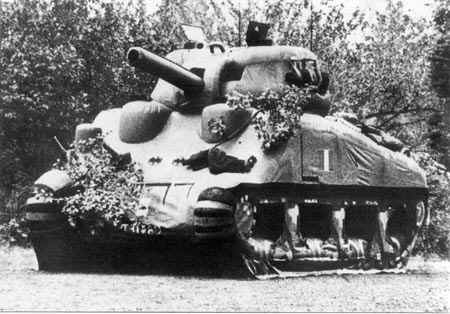
The Ghost Army utilized many different things to get their mission done, but perhaps one of the most interesting things was the use of inflatables (dummies). Tanks, Jeeps, Trucks, Bulldozers, Artillery — the Ghost Army had a plethora of items that were inflatable. What was their purpose? They were used as dummies. From a distance, an inflatable tank or Jeep is going to look real. They would place the inflatables at a distance, and the idea was that enemy troops would see them either on the ground or from the air and think they were real.
They would be inflated in the middle of the night, and could “spring up” just about anywhere. As stated earlier, realism is key here, so to make the staging look even more authentic, the men would use bulldozers to make tracks that looked similar to those of a tank.
Explosives
Dummy artillery flash shells were used at night to help American artillery batteries. The dummies would be set up to a half-mile from the artillery batteries, and utilized black powder and an electric lighter to give the effect the Ghost Army wanted. To get in sync with firing times, communication lines were ran between the artillery batteries and the Ghosts.
The Ghosts Army story remained a secret for 40 years, until the 1980s when it was finally told. In total, the Ghost Army utilized deception in the battlefield 21 times, saving a countless number of lives. Though the secret of the Ghost Army has been out for some time, parts of their story remain classified.
